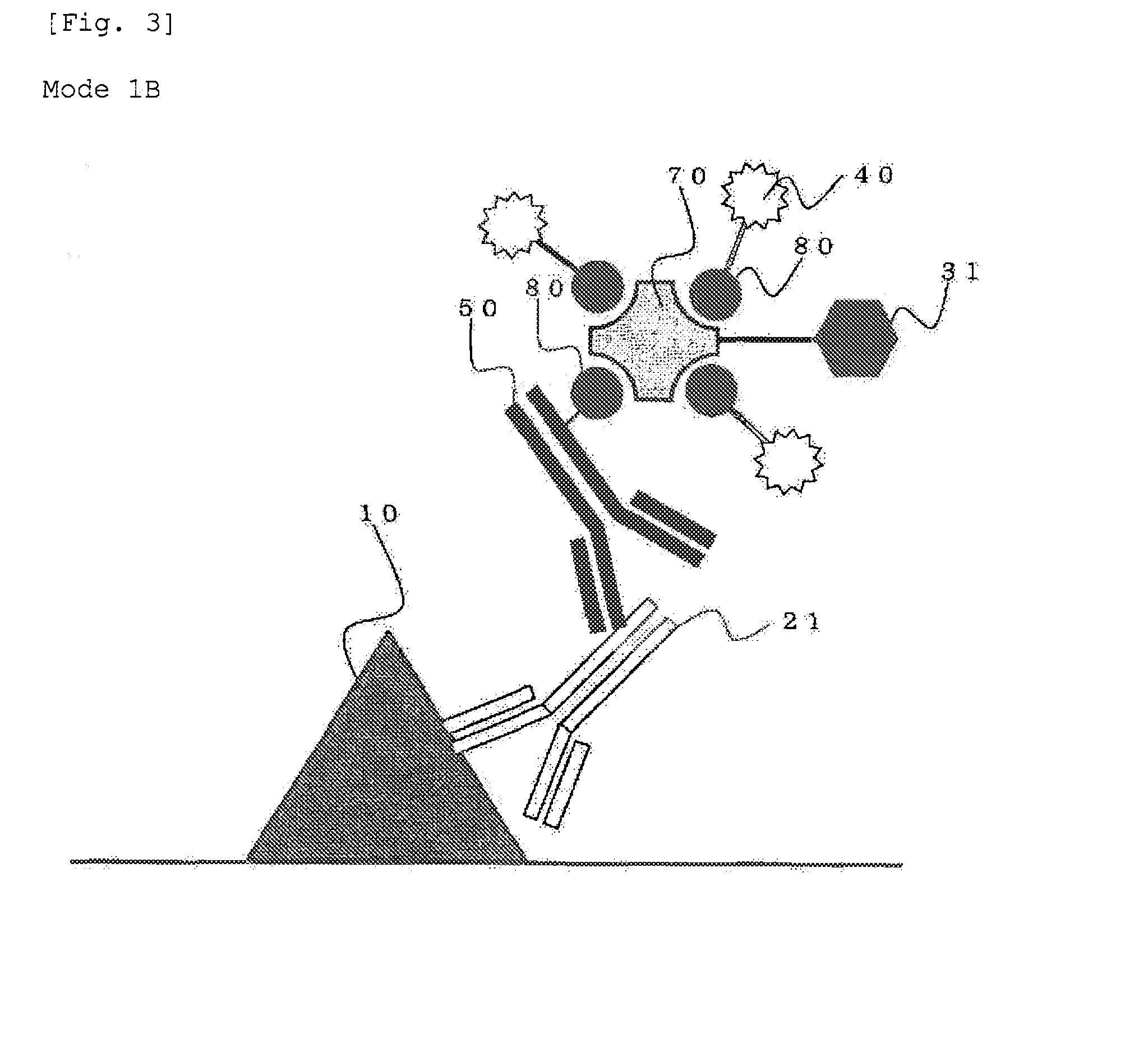Method for staining tissue
a tissue and staining technology, applied in the field of tissue staining methods, can solve the problems of inability to achieve more accurate and detailed pathology judgment based on the experience of skilled pathologists, change in stainability criteria, and inability to predict more right and detailed pathology judgments. , to achieve the effect of high quantitativity and high precision
- Summary
- Abstract
- Description
- Claims
- Application Information
AI Technical Summary
Benefits of technology
Problems solved by technology
Method used
Image
Examples
synthesis example 1
FITC-Aggregated Silica Nanoparticle
[0136]In N,N-dimethylformamide (DMF), 6.6 mg of amino reactive FITC (manufactured by DOJINDO LABORATORIES) and 3 μL of 3-aminopropyltrimethoxysilane (manufactured by Shin-Etsu Silicone: KBM903) were mixed to obtain an organoalkoxysilane compound.
[0137]Then, 0.6 mL of the obtained organoalkoxysilane compound was mixed with 48 mL of ethanol, 0.6 mL of tetraethoxysilane (TEOS), 2 mL of water, and 2 mL of 28% aqueous ammonia for 3 hours.
[0138]The mixture produced in the above-described step was centrifuged at 10,000 G for 20 minutes, and the supernatant was removed. Ethanol was added thereto to disperse the precipitate, and centrifugation was carried out again. Further, by the same procedure, washing was carried out twice with ethanol and twice with pure water. As a result, 10 mg of an FITC-aggregated silica nanoparticle was obtained as a fluorescent aggregate.
[0139]By performing SEM observation for 1000 of the obtained FITC-aggregated silica nanoparti...
synthesis example 2
TXR-Aggregated Silica Nanoparticle
[0140]Using Texas Red (manufactured by DOJINDO LABORATORIES, hereinafter referred to as “TXR”) instead of amino reactive FITC in Synthesis Example 1, the same synthesis was carried out, and 10 mg of a TXR-aggregated silica nanoparticle was obtained. By performing SEM observation for 1000 of the obtained TXR-aggregated silica nanoparticle, it was found that the average particle size was 106 nm and the coefficient of variation was 11%.
synthesis example 3
Semiconductor Nanoparticle (Qdot605)-Aggregated Silica Nanoparticle
[0141]To 10 μL of a CdSe / ZnS decane dispersion (“Qdot605” (registered trademark), manufactured by Invitrogen Corporation), 0.1 mg of TEOS, 0.01 mL of ethanol, 0.03 mL of concentrated aqueous ammonia were added, and the mixture was stirred for 3 hours to carry out hydrolysis.
[0142]The mixture obtained in the above-described step was centrifuged at 10,000 G for 20 minutes, and the supernatant was removed. Ethanol was added thereto to disperse the precipitate, and centrifugation was carried out again. Further, by the same procedure, washing was carried out twice with ethanol and twice with pure water. As a result, 40 mg of a Qdot605-aggregated silica nanoparticle was obtained as a fluorescent aggregate.
[0143]By performing SEM observation for 1000 of the obtained Qdot605-aggregated silica nanoparticle, it was found that the average particle size was 108 nm and the coefficient of variation was 14%.
Production of Biotinylat...
PUM
 Login to View More
Login to View More Abstract
Description
Claims
Application Information
 Login to View More
Login to View More - R&D
- Intellectual Property
- Life Sciences
- Materials
- Tech Scout
- Unparalleled Data Quality
- Higher Quality Content
- 60% Fewer Hallucinations
Browse by: Latest US Patents, China's latest patents, Technical Efficacy Thesaurus, Application Domain, Technology Topic, Popular Technical Reports.
© 2025 PatSnap. All rights reserved.Legal|Privacy policy|Modern Slavery Act Transparency Statement|Sitemap|About US| Contact US: help@patsnap.com



